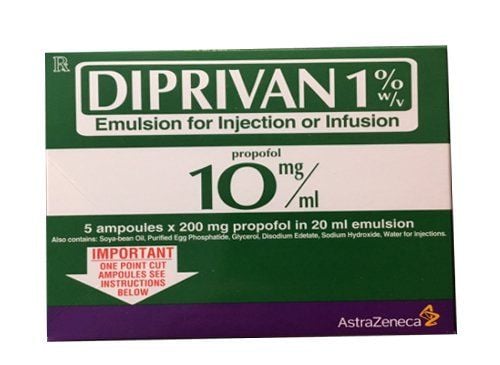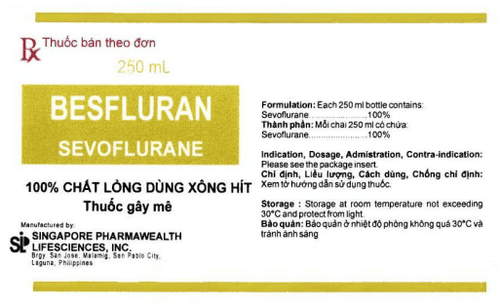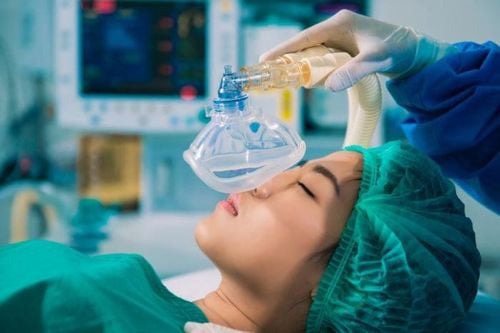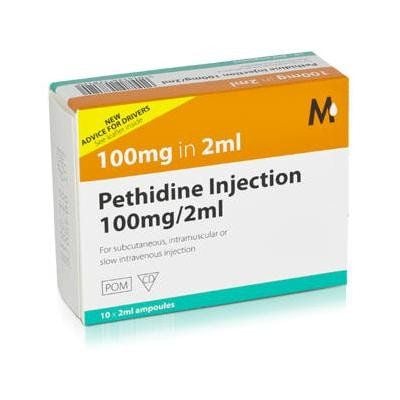This is an automatically translated article.
The article was professionally consulted by Specialist Doctor II Nguyen Binh - Department of General Surgery - Vinmec Ha Long International Hospital. Doctor Nguyen Binh has more than 20 years of experience in the field of anesthesia and resuscitation.Endotracheal anesthesia for thymectomy is applied to control the patient's breathing during and after surgery.
1. Endotracheal anesthesia What is thymectomy?
In laparoscopic thymectomy, the technique of general anesthesia with intubation, also known as endotracheal anesthesia, is used to control the patient's breathing during and after surgery.2. What to prepare for endotracheal anesthesia for thymectomy?
To perform endotracheal anesthesia for endoscopic thymectomy, the following means, machinery, equipment, and medications are required:The system includes an anesthetic machine (with breathing), oxygen hand squeezer, and a machine. monitor vital functional indicators (such as arterial blood pressure, breathing rate, temperature, ECG, EtCO2, SpO2), suction machine, defibrillator, ... endotracheal tube sizes to place, endoscopic lamp larynx, mask, straw, oropharyngeal cannula, squeeze balloon, soft mandrin, Magill pliers. Salbutamol and Lidocaine 10% spray. Other means of supporting endotracheal anesthesia for endoscopic thymectomy in case of difficult intubation: laryngeal mask, Cook's tube, flexible bronchoscope, mouth opener, tracheostomy kit, etc. ..
3. Procedure for endotracheal anesthesia endoscopic thymectomy
Before performing surgery, patients need to be examined under anesthesia to promptly detect and prevent possible risks, as well as evaluate difficult intubation status.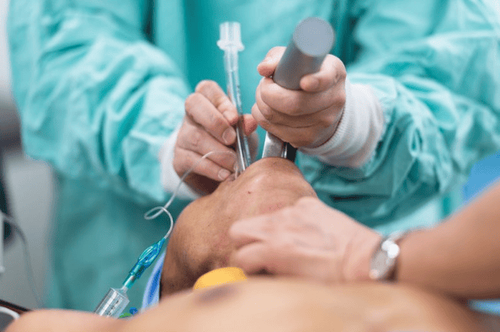
Step 1: Put the patient in a supine position, at least 5 minutes before induction of anesthesia, give 100% oxygen with a dose of 3 - 6 liters/minute. Install machines to monitor and set up transmission lines. If necessary, the patient can be given sedatives from the night before surgery. Step 2: Initiation of anesthesia begins with intravenous injection (drugs: etomidate, propofol, ketamine ...), analgesics (fentanyl, sufentanil ...), using muscle relaxants (succinylcholine, rocuronium, vecuronium, .. .). It is necessary to ensure conditions for endotracheal intubation during thymectomy (patients sleep deeply, muscles relax enough). Step 3: Perform oral intubation. The technique of oral intubation is performed as follows: (1) Open the patient's mouth, insert the laryngoscope into the right side of the mouth, move the tongue to the left side of the mouth, insert the light deeply, and combine Use the right hand to press the cricoid cartilage to find the lid and glottis; (2) The next step in endotracheal anesthesia for thymectomy is to gently insert the endotracheal tube through the glottis, when the endotracheal balloon passes through the vocal cords about 2-3 cm, then stop. ; (3) Gently withdraw the laryngoscope; (4) Intubation of endotracheal balloon; (6) Listen to the lungs, see the EtCO2 index to check that the endotracheal tube is in place; (6) Use adhesive tape to fix the endotracheal tube. (7) Set the parameters of the anesthesia machine and have the patient ventilated through the endotracheal tube, listen to check the lung ventilation when the patient starts mechanical ventilation. In case if it is necessary to avoid biting the endotracheal tube, a canula can be placed. into the patient's mouth. Step 4: The next step in endotracheal intubation anesthesia for thymectomy is to maintain anesthesia with anesthetics (intravenous or vapor), analgesia, muscle relaxants (if necessary), and respiratory control. inhale the patient by means of a machine or hand squeezer.
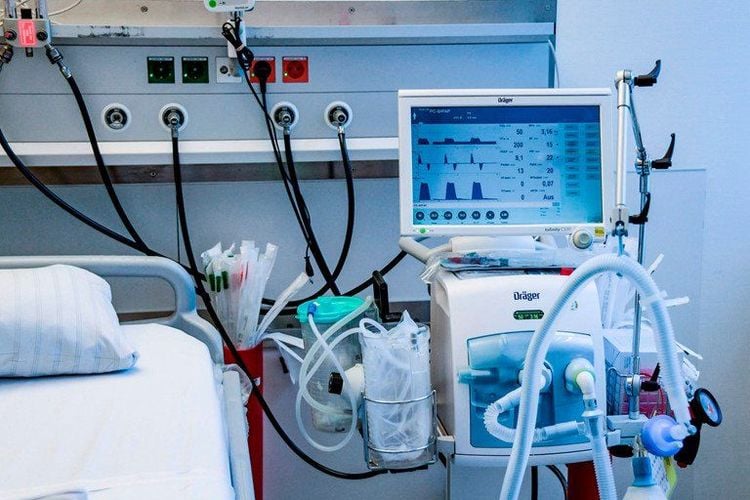
4. Monitoring during endotracheal anesthesia laparoscopic thymectomy
During endotracheal anesthesia for thymectomy, it is necessary to monitor the following signs and indicators:Depth of anesthesia: Monitor blood pressure, heart rate, blood pressure, sweating status, tears, BIS, MAC, Entropy (if any) ... Vital signs: Monitor blood pressure, heart rate, body temperature, EtCO2, SpO2 indicators. Monitor in case the endotracheal tube is in the wrong position, or the tube is blocked or folded. At the end of endotracheal anesthesia for endoscopic thymectomy, the following criteria should be met before extubation:
The patient is awake and can follow orders. Breathe spontaneously, breathe evenly, breathing rate is within normal limits. Blood pressure and pulse are stable. Body temperature over 35 degrees Celsius. Raise head >5 seconds, TOF index >0.9 (if any). The patient had no complications from anesthesia and surgery.
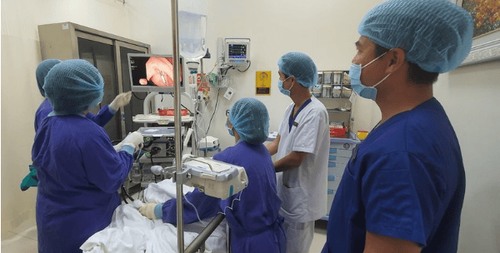
5. Managing complications after endotracheal anesthesia laparoscopic thymectomy
During endotracheal anesthesia, endoscopic thymectomy may occur some complications that need to be treated as follows:Hemodynamic disturbances: Depending on the cause and symptoms such as arrhythmia, increased or hypotension, ... will be treated appropriately. Difficult intubation in anesthesia laparoscopic thymectomy: Switch to difficult intubation procedure or proceed with another method of anesthesia. Misplaced endotracheal tube into the stomach: Re-intubate the endotracheal tube when misplaced with symptoms of auscultation of the lungs without alveolar murmurs, no measurement of EtCO2. Constriction of the larynx, trachea, bronchi: Complications during endotracheal anesthesia with thymectomy may cause difficulty or inability to ventilate, at this time there will be a hissing sound or a muted lung. . For management, it is necessary to provide adequate oxygen, and at the same time give sleeping pills and muscle relaxants, bronchodilators and corticosteroids to ensure ventilation. In case of respiratory failure, difficult intubation procedure should be applied. Trauma in endotracheal intubation: Depending on the damage such as tooth fracture, bleeding, foreign body in the airway, ... will be treated appropriately. Respiratory complications: Find and treat the cause, ensure ventilation and provide 100% oxygen when endotracheal anesthesia is endoscopic thymectomy causing respiratory complications such as endotracheal tube folded, retracted or Pushing deep into one lung, opening or lowering the respiratory system, the oxygen runs out, the effect of soda is gone, causing hypoxia. Complications after extubation: Depending on the cause, choose appropriate management when symptoms appear after extubation such as respiratory failure, hoarseness, sore throat, laryngospasm, gas trachea, bronchi, laryngotracheal and tracheal stenosis, upper respiratory tract infection.

Vinmec International General Hospital has applied endotracheal anesthesia technique for thymectomy. The procedure of endotracheal anesthesia at Vinmec is carried out methodically and according to standard procedures by a team of highly skilled doctors and modern machinery. As a result, complications after anesthesia and surgery are always minimized to the maximum extent.
Please dial HOTLINE for more information or register for an appointment HERE. Download MyVinmec app to make appointments faster and to manage your bookings easily.





